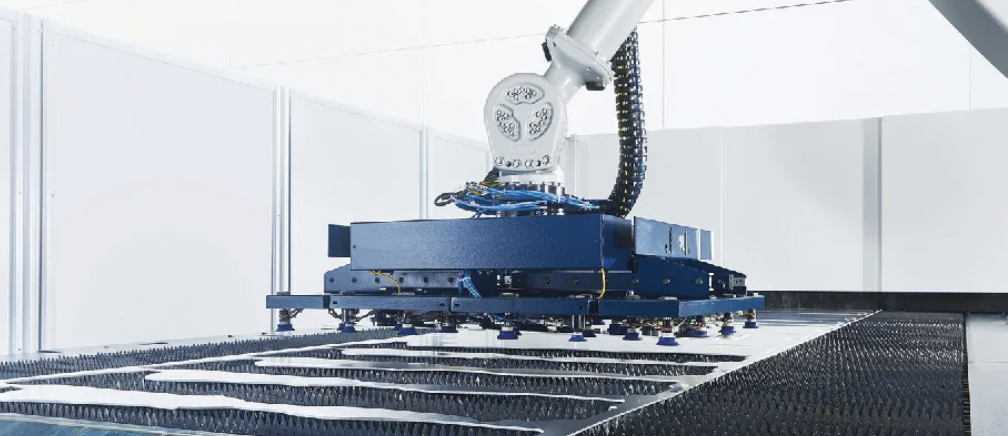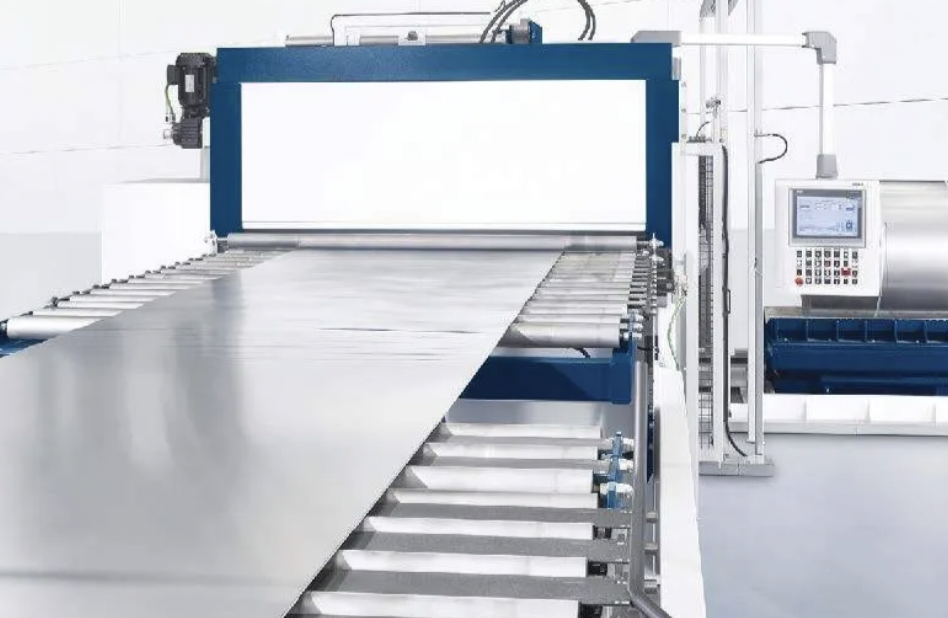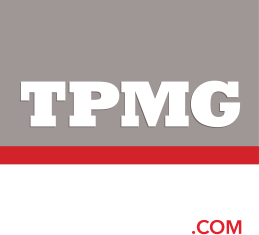Machinery builder develops standard-model coil-fed laser cutting system for efficient production at service centers and beyond

The hydraulically controlled strip storage bridge supplies the laser cutting cell with material

Robots enable parallel-to-production unloading and precise stacking
She adds that dedicating an employee at the end of the laser machine to sort parts and manage pallet changes hinders that person from “doing more creative work. Here, employing the robot at the end of the conveying system to sort parts adds to the efficiency.” STANDARD TECHNOLOGY The new laser blanking system is designed as a standard model for a range of environments, from sheet metal processors to large manufacturers for applications that do not fit a press line or traditional 2D laser cutting. “Press lines constitute a large investment cost and offer little flexibility. 2D laser cutting lacks the productivity needed for repeated high volume. The laser blanking system offers simple, fast and economical production,” according to literature about the system. “The machines that have existed in this niche are typically custom-made for automotive lines, meaning they’re being used to cut a door or a fender out of sheet metal,” says Weigelt. “We are offering a standard piece of equipment that has a high-accuracy laser. It’s not only for the big companies.” Later this year, TRUMPF will introduce the TruLaser 8000 Coil Edition, which can process steel, stainless steel and aluminum up to 0.157 inch thick (optionally 0.236 inch), including high-strength steels. Material is transported along the machine on a support belt, guiding new material in and moving cut parts and scrap out. “The system can be flexibly connected to a large system, and then finished cut parts are transported to other connected machines, like bending,” says Quaranta. Alternatively, the parts can be moved on to finished pallets and “sent to wherever is necessary within the facility,” she adds. The machine’s control was developed to manage the entire line, and one programming process controlling the entire system is a major benefit, Weigelt says. “TruTops Boost—the software we use for all our punches, lasers and brakes—controls the coil laser, leveler and decoiler, as well as part removal through the robot. You only have one interface from which you manage the entire work stream of this complex piece of equipment. Boost has the capability to directly connect to the ERP system,” he continues. “If anything changes in demand, that can be sent to the machine easily and it is paperless.”

Material is transported linearly through the machine, significantly reducing nonproductive time
SWITCHING OVER
Those who might want to add a coil-fed laser system to their operations are advised to first assess and modify how they think about production flow within their facilities. Quaranta says a company with a coil-fed laser can consider more freely the materials they’re purchasing and if they should be converting those to coil from sheet, what thicknesses they can handle in coil, and what parts can be cut on a coil-fed versus a flat-sheet laser. Most laser operators will be able to quickly get up to speed on the coil laser, she says, because they already understand the technology “and how to program nested parts. What they’ll need after that is exposure to the control software, instruction on how to load a coil onto the mandrel and introduction to the robot.” Weigelt emphasizes, “The switch is very easy as the machine is programmed through the same programming software [TruTops Boost] for the separation of parts through the robots.” Quaranta claims the TruLaser 8000 Coil Edition represents a turnkey system offering “a low barrier to entry and a quick learning process. And since it’s known technology, this coil-fed laser system offers a cost-effective option for processing high-volume, thin sheet with higher efficiency.” MM
TRUMPF Inc., 860/255-6000, http://trumpf.com/












